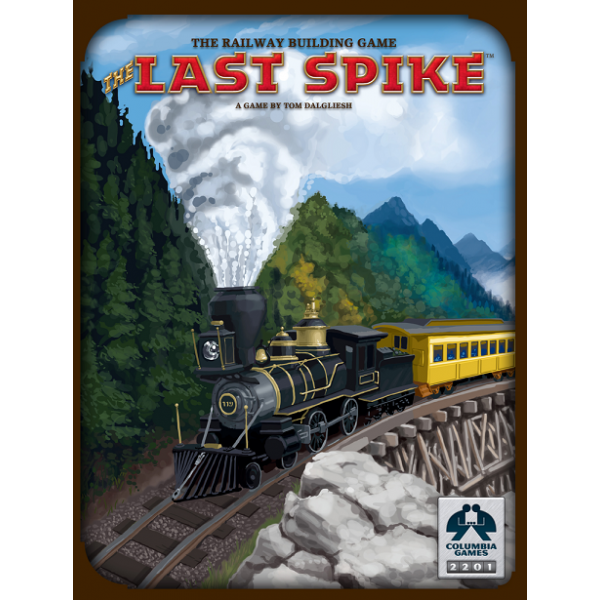Cooperative Competition: A Review of The Last Spike

The Last Spike doesn't just have a fun train-theme and unique player interaction, it was also a 2016 Mensa Select Winner and you can certainly see why as you play it.
Gameplay
The goal of the game is to build a railway from St. Louis to Sacramento. With nine cities on the board, there are multiple routes the railway can take and some cities might not end up connected to the line at all.
At the start of the game each player draws four random tiles. Each tile is a piece of railway track and has a letter and number written on it. The letter and number indicates the spot on the board on which it can be built. Every city needs four tiles to connect it to another city. Each tile also has a number indicating how much it costs to build. On your turn you must play one track tile on the board. You may then choose to buy a land card before drawing a new track tile and ending your turn.
Each city has several land cards. When two cities are connected by track, everyone who owns a land card in one of those cities earns money. The more of a city’s cards you own, the more money you make when it cashes out. Land cards have no value at the end of the game, so if a city was never connected to the railway, any land cards you purchased for it are wasted.
The game ends when St. Louis and Sacramento are connected. You win if you have the most money.

Review
At first glance the game looks very simple, and this carries over to teaching the rules: players can pick them up quite quickly. The first couple of turns also continue to feel simple and straightforward, but you quickly start to pick up on the clever combination of luck-of-the-draw when it comes to which tiles you have and the strategy involved. But the game really comes alive in the unique way competing players have to cooperate with one another.
The best part about The Last Spike is the player interaction. There is a slim to none chance that you will be able to connect two cities on your own (especially in a three or more player game) so you’re going to have to rely on other players to help you lay down tracks and you have to make it an attractive option for them If you hope to convince them. If you buy too much land of one city, other players are likely to avoid that city and build the railway elsewhere. This balancing act results in a lot of interesting decisions and leaves you making some tough calls.
If the game has one flaw it’s that the components could use an upgrade. The board is not made of particularly sturdy material, players have to place stickers on the track tiles, and there is little artwork. Nicer components would place The Last Spike on the same level as other classic train-themed board games such as Ticket to Ride.
It says a lot about the gameplay that it manages to outshine the quality of the components and left such a positive impression. There is a lot of depth to the game, between working with other players, choosing which land cards to purchase, and which tracks to build. You won’t regret giving The Last Spike a chance.
Pros: Fantastic player interaction, surprising depth
Cons: The components could use an upgrade, not at its best with two players
Disclosure: we received a complimentary review copy of this game.




